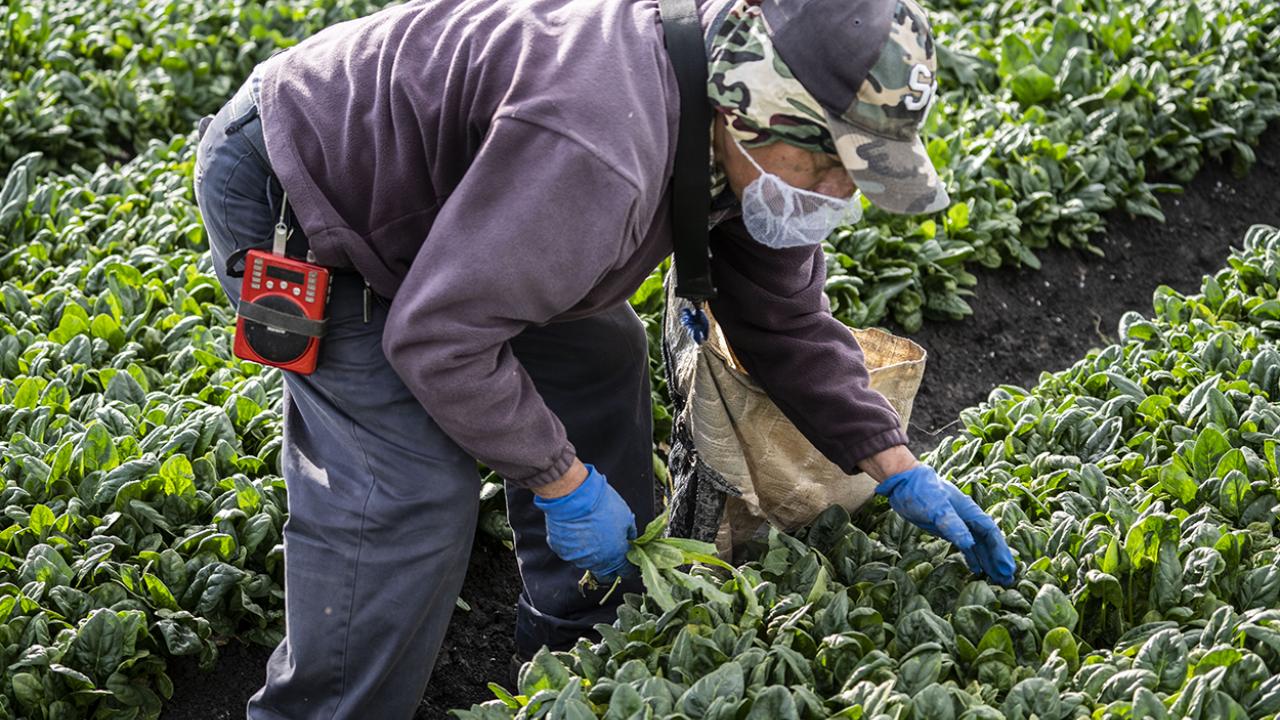
Keeping food safe from farm to table
Fun Fact
Do you know why it’s called iceberg lettuce? In 1926, Bruce Church—University of California graduate, farmer and founder of Fresh Express—developed a way to get his head lettuce from Salinas to the East Coast by loading the freshly-harvested crop in train cars and covering it with ice. As the lettuce-laden cars rolled into stations, folks would call out, “The icebergs are coming, the icebergs are coming.”
Our mothers were right: We should eat our greens—and golds, purples, oranges and reds. A growing body of research shows that eating a wide variety of produce and protein can promote health, prevent disease and even stave off the effects of aging.
In short, farm-fresh food is good for us. But it’s confusing and concerning when products like lettuce, spinach, eggs, peanut butter—you name it—are recalled due to exposure to foodborne pathogens that have the potential to make us sick. How can we be sure our food is safe?
“There will always be some risk of contamination from anything that’s grown outdoors and handled by humans,” said Linda Harris, Cooperative Extension specialist and chair of the CA&ES food science and technology department. “But our researchers work to promote food safety at each stage of the food production process to significantly minimize the risk.”
Food recalls have seen an uptick in recent years, but Harris says that’s because we’re better at detecting potential problems.
“We can detect them faster and more accurately, which means—especially with perishable products—there’s a greater chance the product is still in the marketplace when we discover there’s something to recall,” Harris said. “When food is recalled before people get sick, by far the most common situation, it means the mechanisms are in place to keep us safe.”
CA&ES faculty work with farmers, processors, packers, shippers, retailers and consumers to promote food safety with hundreds of agricultural commodities. As an example, let’s look at leafy greens like lettuce and spinach as they make their way from farm to table.
On the farm
It’s all about preventing contamination, which can come from water, soil, animals, equipment and humans. Researchers conduct studies that help identify food safety challenges and work with small- and large-scale farmers to find solutions.
Is the water clean?
Water used for irrigation and other agricultural uses can increase the risk of foodborne illness if it’s not clean. Any water that has the potential to come in contact with edible portions of the plant must comply with stringent food safety guidelines for leafy greens.
Managing manure
Manure can be an economical, practical source of the nutrients plants need to grow. But raw manure can harbor potential foodborne pathogens. Untreated manure cannot be used on lettuce or leafy greens. Instead, growers can use only properly composted soil amendments for these and many other crops.
Tips for Consumers
By the time leafy greens reach your kitchen, producers, regulators and researchers have worked together to ensure safety. Here’s what you can do at home.
Freshness matters
Buy leafy greens that are fresh and not bruised, whether in or out of a package. For packaged salads, check the best-if-consumed-by date.
Separate
Keep leafy greens away from household chemicals and raw meat, poultry and seafood in your shopping cart, check-out bag and refrigerator.
Do not prepare leafy greens with the same knife or cutting board used with raw poultry, meat and seafood unless your tools have been washed with hot water and soap.
Chill
Packaged salads should be refrigerated in the store and at home.
Clean
Rinse head lettuce or fresh leafy greens under cool tap water.
Packaged leafy greens labeled “ready to eat” or “triple washed” do not need to be rinsed.
Never wash lettuce with bleach or detergent.
Wash your hands with warm water and soap for at least 20 seconds before and after handling lettuce and leafy greens.
Where animals roam
Produce-related outbreaks are sometimes traced to plants and watersheds contaminated by domesticated animals like livestock, wild animals like feral pigs and birds like poultry and geese. CA&ES faculty work with lettuce growers to identify sustainable approaches that minimize crop contamination and protect wildlife and the natural environment.
Harvest
Head lettuce, like iceberg, is usually harvested by hand and machine-wrapped in plastic on conveyer systems set up in the field. Growers are required to clean and sanitize all machinery and provide workers the training, sanitized gloves and washing stations they need to promote food safety.
Leafy greens, such as spinach, are often harvested by machines that mow the crop and gather the leaves into large bins. The equipment is cleaned and sanitized between uses and handlers ensure leafy greens don’t touch the soil after harvest.
Processing
After harvest, produce may be washed, sorted, packaged and chilled. CA&ES faculty are working to develop technologies to help processors keep water and equipment clean while preserving the flavor and nutrition of leafy greens.
UC Davis researchers are also developing antimicrobial packaging that both repels bacteria and reduces the microbes that cause food to spoil. The new plastic material could be used to line produce bins and wrap produce to improve safety and freshness.
Distribution
Lettuce and leafy greens sometimes have to travel long distances to reach consumers. To promote postharvest quality and safety, distributors keep transport vehicles clean and make sure produce stays chilled all the way to the grocery shelf.